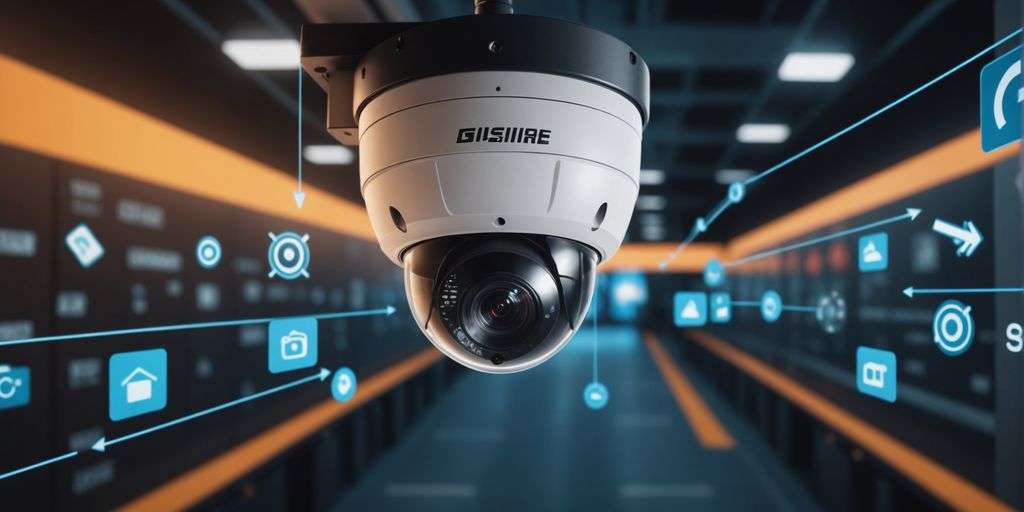Factors Influencing CCTV Storage Requirements
Number of Cameras
The number of cameras in your CCTV system is a major factor in determining storage needs. More cameras mean more footage to store, which increases the storage requirements. Each additional camera adds to the total storage needed.
Resolution and Frame Rate
Higher resolution and frame rate result in clearer and smoother video but also require more storage. For example, a 1080p camera will need more space than a 720p camera. Similarly, a higher frame rate, like 30 frames per second (fps), will use more storage than 15 fps.
Compression Methods
Compression methods like H.264 or H.265 can significantly reduce the amount of storage needed. These methods compress the video files, making them smaller without losing much quality. Choosing the right compression method can save a lot of storage space.
Understanding these factors can help you plan your CCTV storage needs more effectively.
Common Scenarios for CCTV Storage Needs

Understanding the storage needs for CCTV systems can be complex, but breaking it down into common scenarios can help. Here, we explore different setups and their storage requirements.
Low Resolution and Motion-Only Recording
For systems that use low resolution and only record when motion is detected, storage needs are minimal. Typically, these setups require between 6GB and 60GB of storage. This is ideal for small businesses or homes where continuous recording isn’t necessary.
High Resolution and Continuous Recording
In contrast, high-resolution cameras that record continuously demand significantly more storage. These systems can require anywhere from 600GB to 6TB of storage. This setup is often used in high-security areas where every detail matters.
Estimating Storage for Different Setups
To estimate storage needs, consider the number of cameras, their resolution, and how often they record. For example, a setup with 10 high-resolution cameras recording continuously will need much more storage than a system with 5 low-resolution cameras recording only on motion. Using a storage calculator can simplify this process.
When planning your CCTV installation, it’s crucial to understand your storage needs to avoid future issues. Proper planning ensures you have enough space to store important footage without running out of storage.
Optimising Your CCTV Storage
Using Storage Calculators
To make the most of your CCTV storage, start by using storage calculators. These tools help you estimate how much storage you need based on factors like the number of cameras, resolution, and recording duration. Accurate calculations can prevent both overestimating and underestimating your storage needs.
Regular Backups
Regularly backing up your important files is crucial. Even if your CCTV storage is limited, you can transfer essential footage to a computer or external drive. This frees up space for new recordings and ensures that critical data is not lost.
Choosing the Right Storage Solutions
Selecting the appropriate storage solution is vital for optimising your CCTV system. Options include Network Attached Storage (NAS), cloud storage, and local hard drives. Each has its pros and cons, so choose one that fits your specific needs and budget.
Regular maintenance and updates to your storage system can significantly enhance its efficiency and longevity.
Future Trends in CCTV Storage
Increasing Megapixels and Storage Needs
As CCTV technology advances, cameras with higher megapixels are becoming more common. This means that each camera captures more detailed images, which in turn requires more storage space. The current storage need per camera ranges from 60 to 240 GB, but this is expected to grow as megapixel counts increase.
Innovative Storage Solutions
To address the growing storage demands, new and innovative storage solutions are being developed. These include cloud storage options, which offer scalable and flexible storage capacities. Additionally, advancements in compression technologies are helping to reduce the amount of storage needed without compromising on video quality.
Preparing for Future Demands
It’s important to plan for future storage needs to avoid potential issues. This includes considering the type of storage solutions that will best meet your needs, whether it’s traditional DVRs, NVRs, or cloud-based options. Regularly updating your storage infrastructure and keeping an eye on emerging technologies can help ensure that you are prepared for future demands.
With the increasing use of surveillance systems, the CCTV storage capacity is a growing concern for businesses and users alike. However, innovative options will emerge before we approach a real storage crisis.
Conclusion
In summary, figuring out how much storage your CCTV system needs can seem tricky at first. But by understanding the key factors like camera resolution, frame rate, and how long you want to keep the footage, you can make a good decision. Remember, as technology gets better, storage needs might change too. So, always keep an eye on the latest options and tools to help you manage your CCTV storage efficiently. With the right approach, you can ensure your surveillance system runs smoothly without running out of space.
Frequently Asked Questions
How long does 1TB of storage last for CCTV?
The duration that 1TB of storage lasts depends on several factors like resolution, compression, and frame rate. For instance, a 720p camera might store up to 30 days of footage on 1TB, while a 4K camera may only store about 7-10 days.
How much storage do I need for my CCTV system?
The storage needed varies based on the number of cameras, resolution, frame rate, compression method, and how long you want to keep the footage. You can use online CCTV storage calculators to get an estimate.
Can I optimise my CCTV storage?
Yes, you can optimise CCTV storage by using compression methods, adjusting resolution and frame rates, and regularly backing up important footage. Choosing the right storage solutions also helps.





